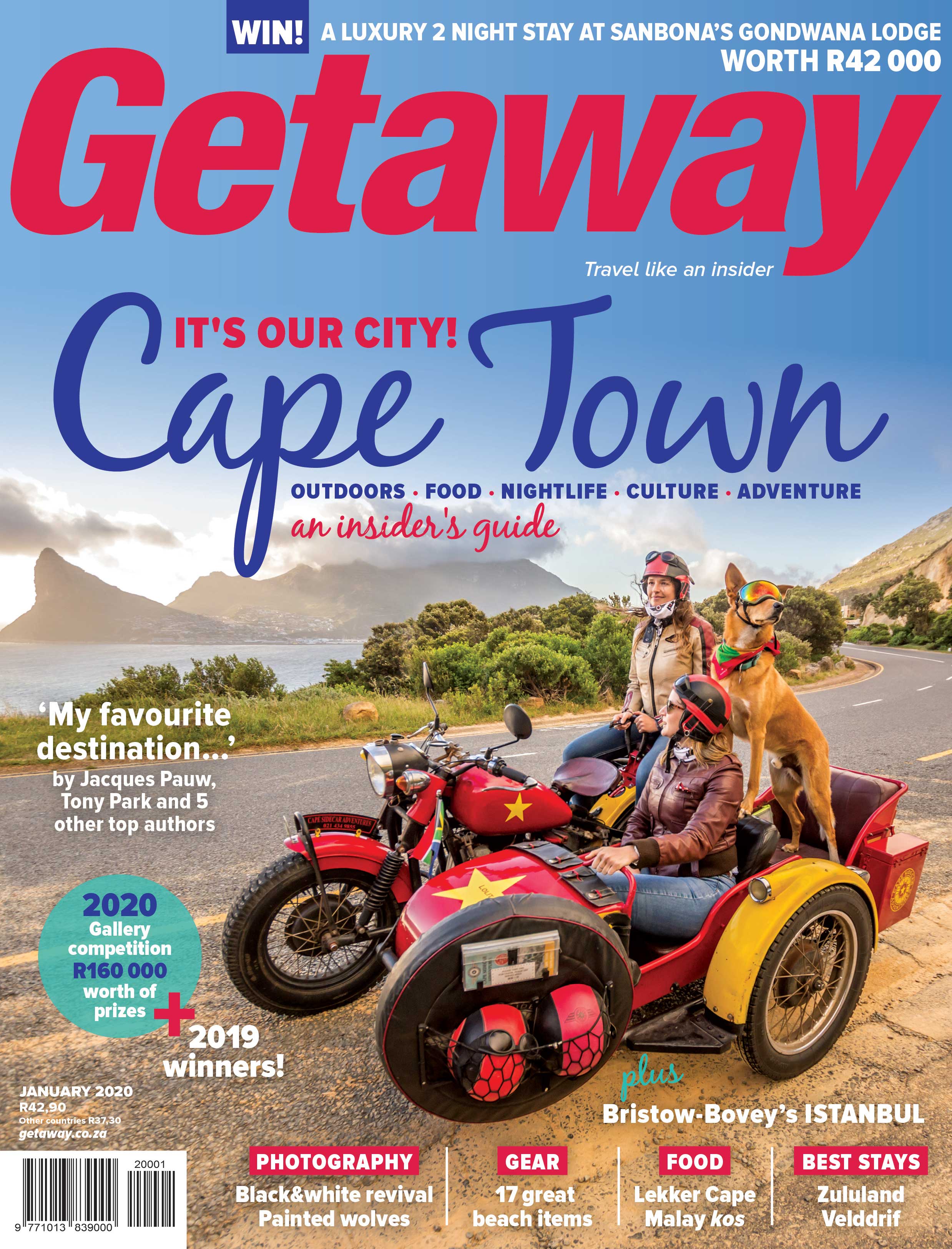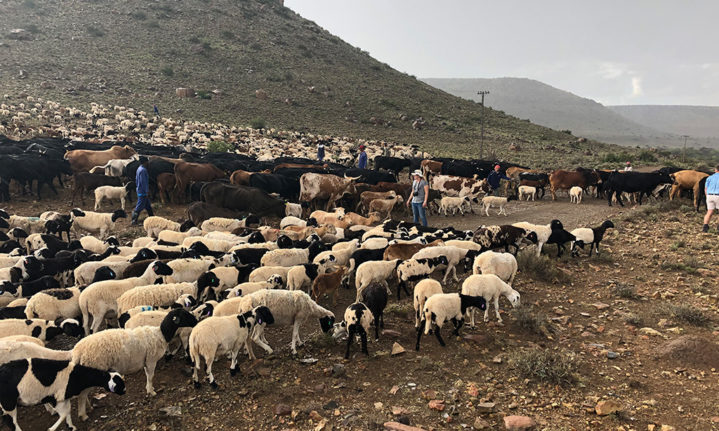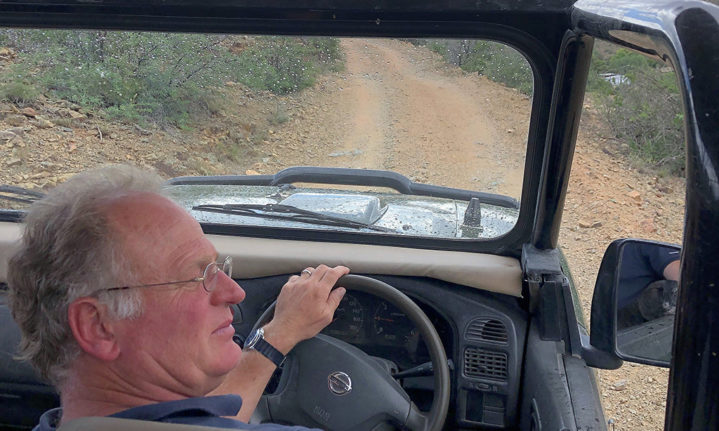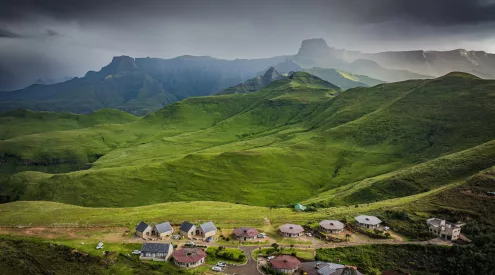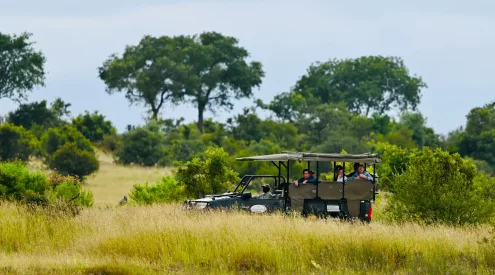Chris Hock visits a regenerative farming project that might change the face of the Karoo.
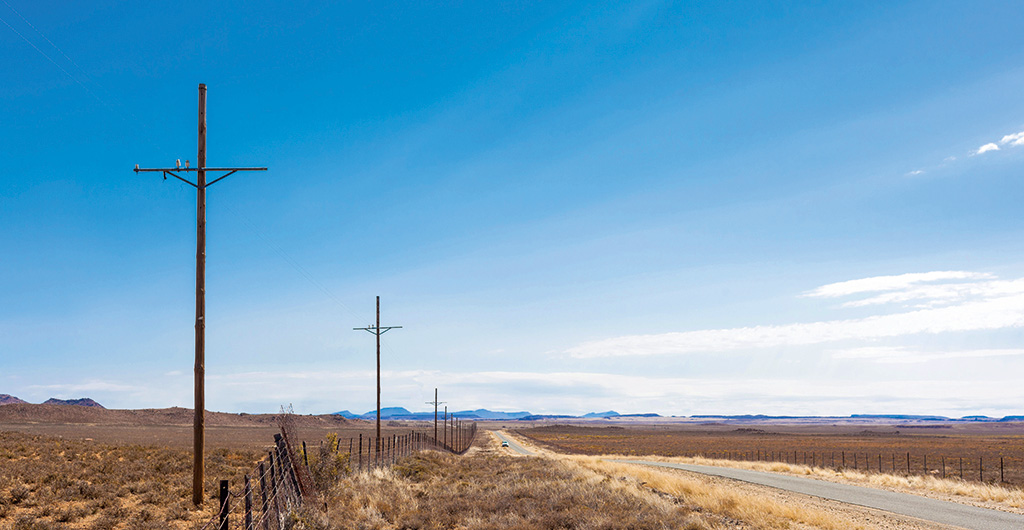
‘South Africa is reputedly the second-most fenced place on Earth (after Texas), partly due to historic government grants aimed at reducing farm labour’. Image: Alamy/Gallo Images.
Driving north from Cape Town, the air gets brighter and warmer and cleaner as I climb out of the Boland onto the high, dry country of the Karoo. In Beaufort West I meet with Bool Smuts, CEO of the Landmark Foundation and guiding spirit of its ‘shepherding back biodiversity’ project. We drive north off the N1 and onto a dirt road which dips through dry rivulets every few kilometres. Up on a plateau, we enter the five adjoining farms on which Bool is taking down fences and replacing them with shepherds.
Herded grazing and night kraals are the two pillars of regenerative agriculture. Grasslands evolved this way over the eons – with short intense impact from grazing and long recovery periods – and Bool wants to show it’s still the best pattern. He aims to sustainably double the farm’s traditional stocking rate. Early results (four years in) are encouraging – they’ve survived three years of savage drought without having to buy in fodder.
Taking down fences is controversial because predators cause costly losses. Sheep farmers manage predation risk with lots of fencing, hunting, poison and setting gin traps (typically 100 per farm, catching 10 times more by-catch than jackals) – and still they lose 10% of their sheep every year. Bool’s success in eliminating predation by shepherding is challenging evidence which clashes with long-held beliefs among fellow farmers.
South Africa is reputedly the second-most fenced place on Earth (after Texas), largely due to historic government grants aimed at reducing farm labour. Bool replaces fences with semi-skilled labour (his six shepherds earn 60% more than the average farm worker). And removing fences pays for itself; the resale of wire and poles is equal to their removal cost.
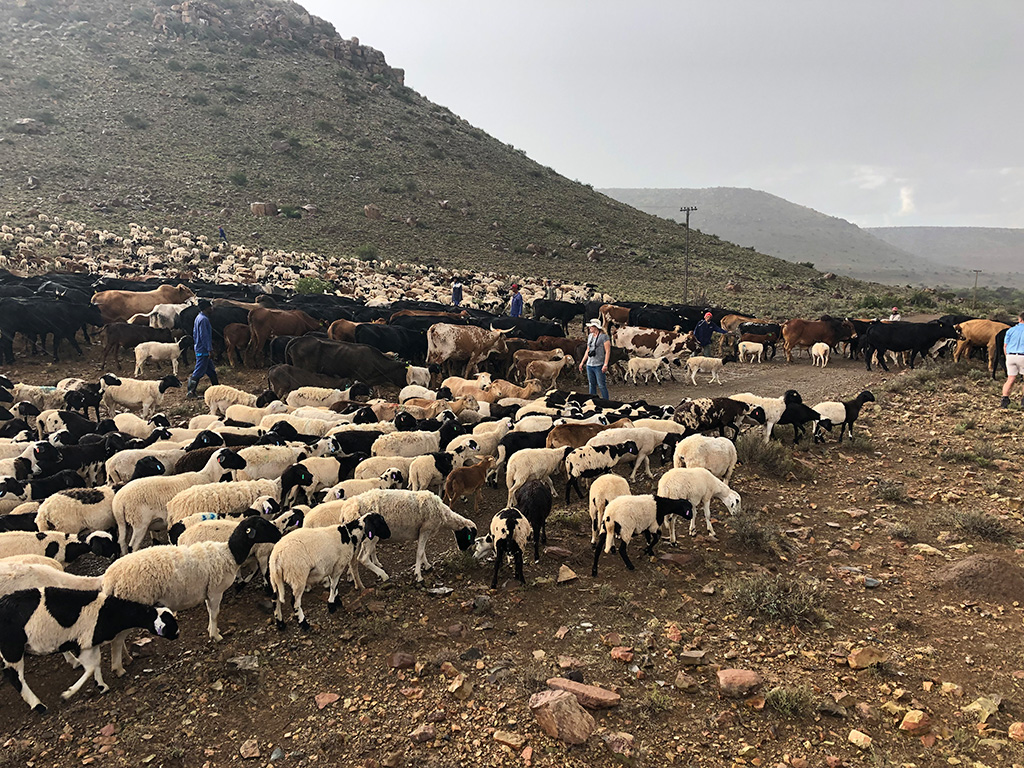
The cattle and sheep divide themselves into their separate kraals at the end of the day. Image credit: Chris Hock
Early next morning we drive north-east, snaking along a dry riverbed for a while. Up on a high viewpoint, the purple dawn is receding over the Karoo – the Three Sisters visible among the distant blue mountains, a large reservoir fed by solar-powered water pumps below us. Water systems are the main investment required by fenceless farming – the big herd drinks 25,000 litres a day and must pass a water point on every daily grazing loop.
Herding imitates the interaction of wild animals and grasslands, and boosts regeneration. The overnight kraals are especially effective: hooves break the soil crust, and nutrients and seeds are introduced via manure. The kraals are moved weekly and never return to the same site. Six to 24 months later, their green footprints are easily visible – living islands invigorating the surrounding veld.
Continuous grazing, by contrast, exhausts plant roots – and as the plants go, so does the soil. Overgrazing affects more than a billion acres globally and has given rise to the (mistaken) notion that animals must be removed for land to recover. Counter-intuitively, the key to pasture health is the interaction between animals and land – how long a piece of grassland is grazed and how long it rests before the next grazing. Finding the optimal balance of these two has become known as managed grazing.
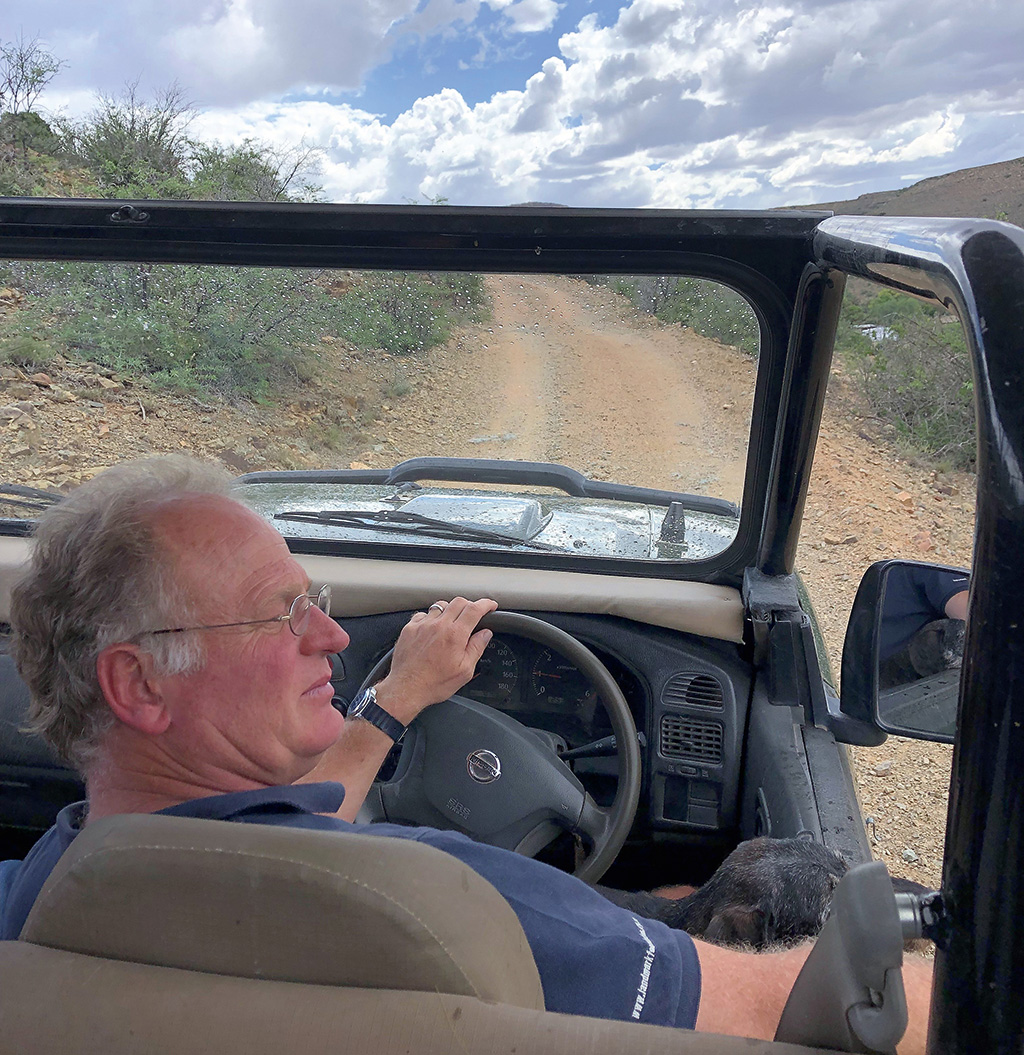
Project manager Bool Smuts inspecting grazing conditions. Image credit: Chris Hock
The fate of water and carbon are intertwined in the soil too – damaged soils lose water and carbon dioxide, healthy soils acquire and hold both. Planned grazing (at triple stocking rates) on half the world’s grasslands would sequester enough carbon to return us to pre-industrial levels, while still feeding people.
It’s the end of the day. We’ve driven over half the farm – chased by dramatic rain clouds sweeping in from the west – and viewed lambing pens, kicked clods on an old kraal site and watched as the cows came home (literally) in the spattering rain. Separating cows from sheep for kraaling looks like organised slow-motion chaos, but 20 minutes later the two herds are in their kraals – the cows calm and quiet, the sheep still making a lot of noise.
That night it rained three millimetres, and everything was freshly washed on my drive back to Cape Town. Between Worcester and Paarl I decided to take the old road winding over the mountain. I hadn’t been up there in years and the staggering views increased my appreciation of the engineering marvel that was the tunnel far below. The shepherds in the Karoo behind me seemed to belong to another world, but the very old path they’d chosen may just turn out to be the elegant new route to rural prosperity, reversing desertification and averting climate catastrophe.
This article was first published in the January 2020 issue of Getaway magazine.
Get this issue →
All prices correct at publication, but are subject to change at each establishment’s discretion. Please check with them before booking or buying.
